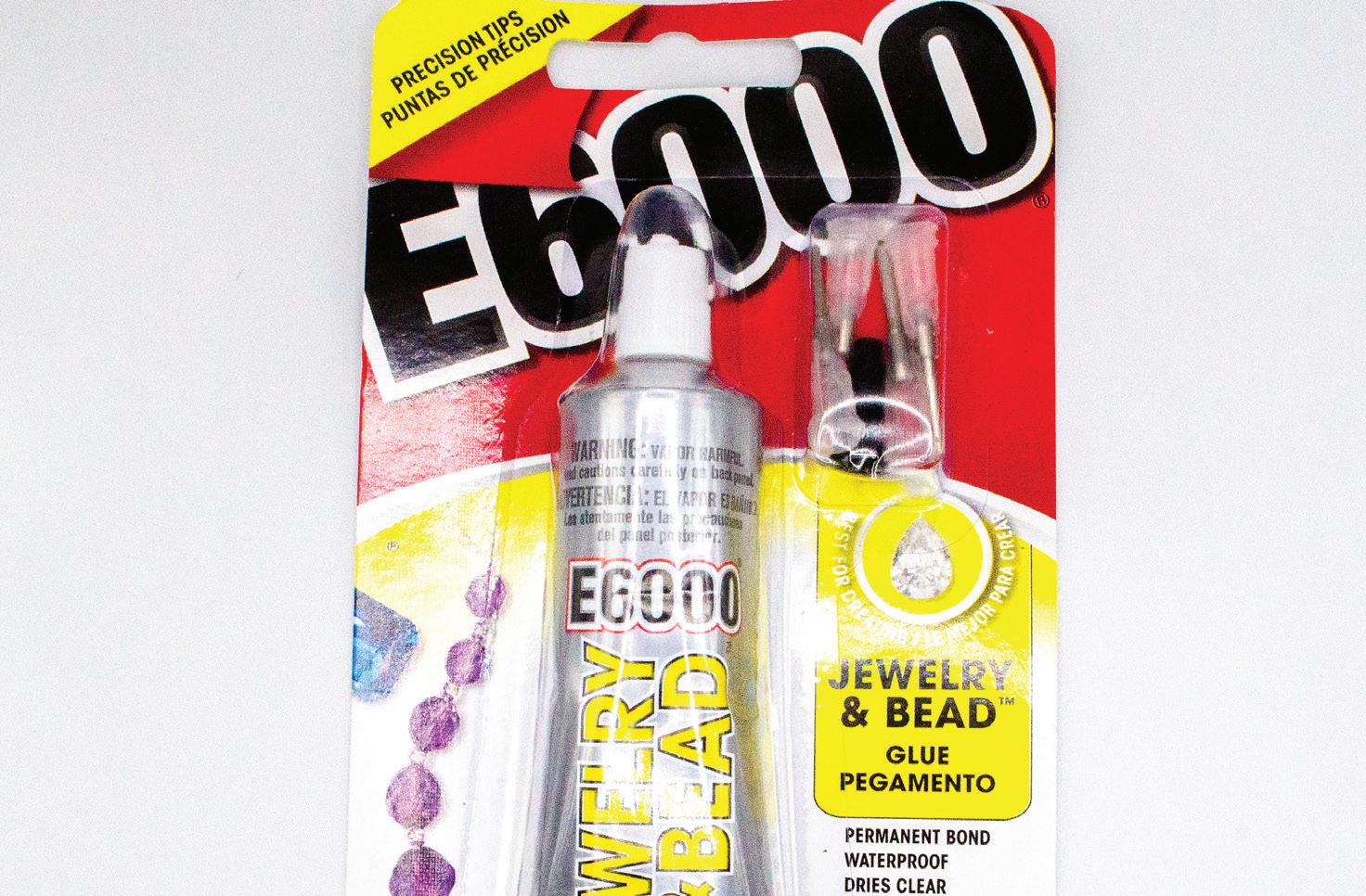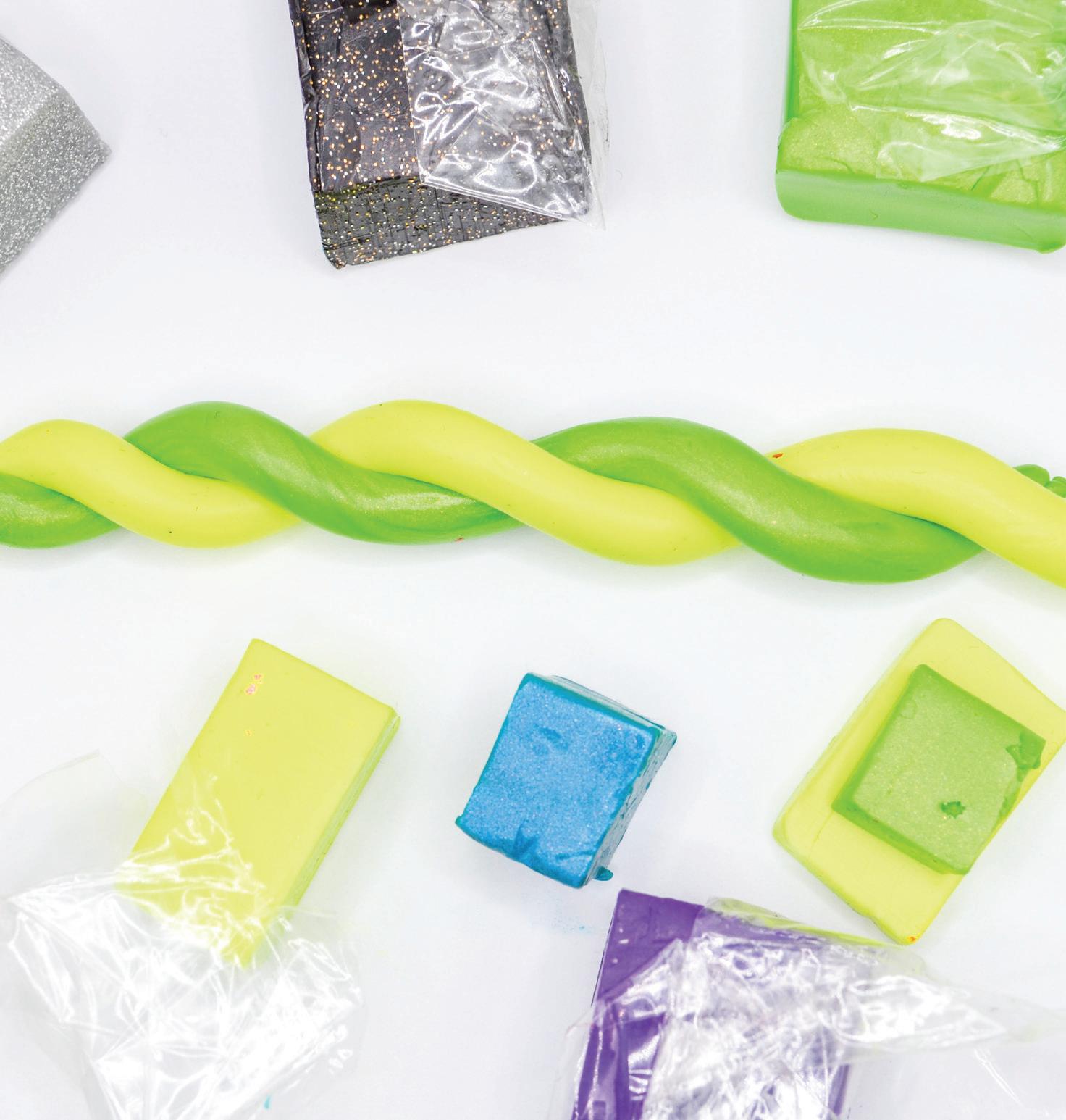
3 minute read
Chapter Two-Tools to Get Started
Pasta Machine-
If used, this machine should only be for clay and can’t be used for food again. It allows for easing clay conditioning. To condition clay with this machine, run small pieces of clay through it.
Advertisement
Cutters or Blades-
These are a thin metal rectangular blades, and it can be straight or curved and used for cutting blocks of clay. Caution: Some of the blades in certain brands tend to be sharper than others.
Cookie Cutters and Forms-
These are used after clay has been conditioned, rolled out, and flattened into a sheet. They come in multiple sizes and shapes to achieve different effects in your pieces.
Cutters, forms, rolling pins
Special Glue for Polymer Clay-
This special glue is for gluing items to the clay pieces after they have been fired in your oven. Jewelry glue works best for these projects.
Stamps-
These are in the form of rubber silicone sheets that have designs stamped into them. They can be placed on flattened clay and a rolling pin is used on top to press the design into the clay.
Sand Paper-
This is used only after the clay has been baked to smooth out sharp edges. Fine grit sandpaper works best. Finished pieces can be sanded wet or dry.
Jewelry Making Pliers-
These are special pliers used in jewelry making mostly to open and close Jump rings.
Jump Rings-
A small ring of metal that can be opened and then closed with jewelry pliers, mainly used to attach pendants to a chain or earrings to an earring post.
Earring Post-
The piece of the earring that goes in your ear, it can be glued on after the clay earring has been baked or inserted into the earring before being baked.

Glue
Bead Racks-
These racks suspend your clay bead so that none of the sides of the bead touches the surface that the bead is being baked on.
Molds-
Clay can be placed on a mold for different desired affects during baking.
Worksurface or Cookie sheet-
The surface that the clay is being worked on. A metal cookie sheet is the most common method since the unbaked clay can be placed directly into the oven after being formed. Most people line the sheet with parchment or baking paper.
Silicone Baking Mats –
An alternative to baking parchment paper and can be reused multiple times.
Polyurethane or Glazing Materials-
These are used only after baking to give the clay a shine. Polyurethane also protects finished pieces.
Storage-
Plastic storage bins work great to keep different colors from touching. Use parchment paper or ziplock bags to separate them.

Bead racks
CH3 How to condition clay?
Hand Rolling
Conditioning clay is needed to be done when the clay is too firm to work with or straight from the packaging. When clay is firm to the touch it has usually been sitting around for a bit and needs to be warmed up to be usable again. Hand rolling is when you condition your clay by hand without using any tools. You roll, press, and squeeze the clay in your hands to warm it up into pliable workable clay. Hand rolling also keeps the clay from getting brittle. Conditioning clay by hand rolling can be hard on your hands but this is a really nice way to get started. The harder the clay the more conditioning is required.

Hand rolled clay










